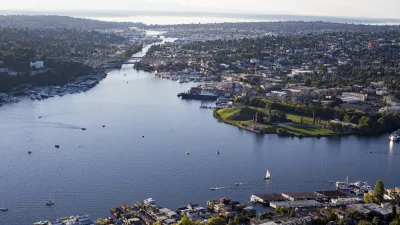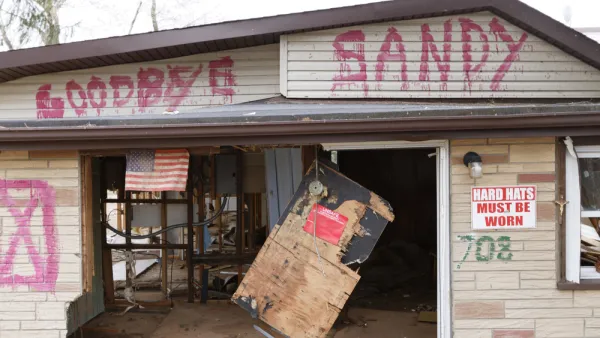Natalie Bicknell notes several deficiencies in the roadmap that resulted from Seattle's participation in the Rockefeller Foundation's now-defunct 100 Resilient Cities program.

When the Rockefeller Foundation pulled the plug on its much-vaunted 100 Resilient Cities program earlier this year, Seattle was still in the middle of its process. "As a result, in comparison to the work achieved by other cities, Seattle's Resilience Roadmap feels rushed and strangely backward looking. Reading through it, I was struck by how the material resembles a laundry list of achievements accomplished by current Mayor Jenny Durkan's administration," Natalie Bicknell writes.
In addition to a generally retrospective focus, the roadmap is also light on details when it comes to weathering natural disasters and climate change. That is, the reasons why resilience became part of the conversation in the first place.
"Seattle's report contains only one slim section devoted to its current strategies for combatting climate change," Bicknell says. And "for a city as threatened by earthquakes as Seattle is, the even shorter shrift given to natural disaster preparedness is a major weakness of the report."
Despite the Seattle roadmap's shortcomings, Bicknell concludes with a word of praise for the erstwhile program. "What 100RC seemed to understand is that cities are complex ecosystems. Establishing urban resilience doesn't result from disconnected programs and policies; instead it arises when the interconnected nature of urban and environmental challenges is acknowledged."
FULL STORY: Seattle’s Resilience Roadmap Lacks a Cohesive Vision for the Future

National Parks Layoffs Will Cause Communities to Lose Billions
Thousands of essential park workers were laid off this week, just before the busy spring break season.

Retro-silient?: America’s First “Eco-burb,” The Woodlands Turns 50
A master-planned community north of Houston offers lessons on green infrastructure and resilient design, but falls short of its founder’s lofty affordability and walkability goals.

Delivering for America Plan Will Downgrade Mail Service in at Least 49.5 Percent of Zip Codes
Republican and Democrat lawmakers criticize the plan for its disproportionate negative impact on rural communities.

Test News Post 1
This is a summary

Test News Headline 46
Test for the image on the front page.

Balancing Bombs and Butterflies: How the National Guard Protects a Rare Species
The National Guard at Fort Indiantown Gap uses GIS technology and land management strategies to balance military training with conservation efforts, ensuring the survival of the rare eastern regal fritillary butterfly.
Urban Design for Planners 1: Software Tools
This six-course series explores essential urban design concepts using open source software and equips planners with the tools they need to participate fully in the urban design process.
Planning for Universal Design
Learn the tools for implementing Universal Design in planning regulations.
EMC Planning Group, Inc.
Planetizen
Planetizen
Mpact (formerly Rail~Volution)
Great Falls Development Authority, Inc.
HUDs Office of Policy Development and Research
NYU Wagner Graduate School of Public Service





























